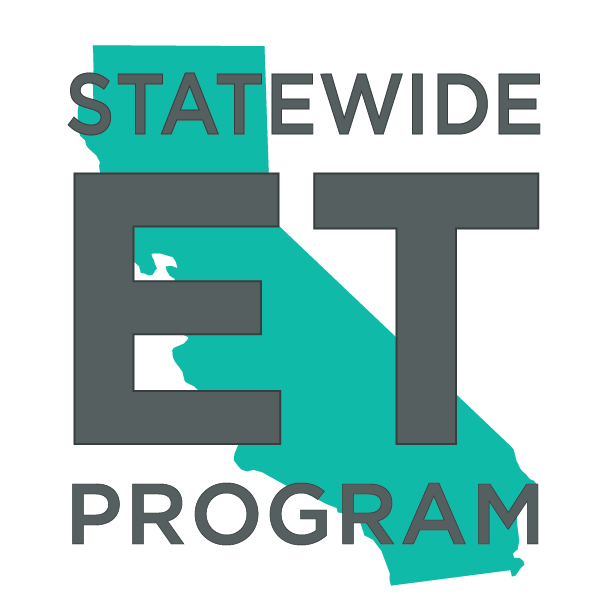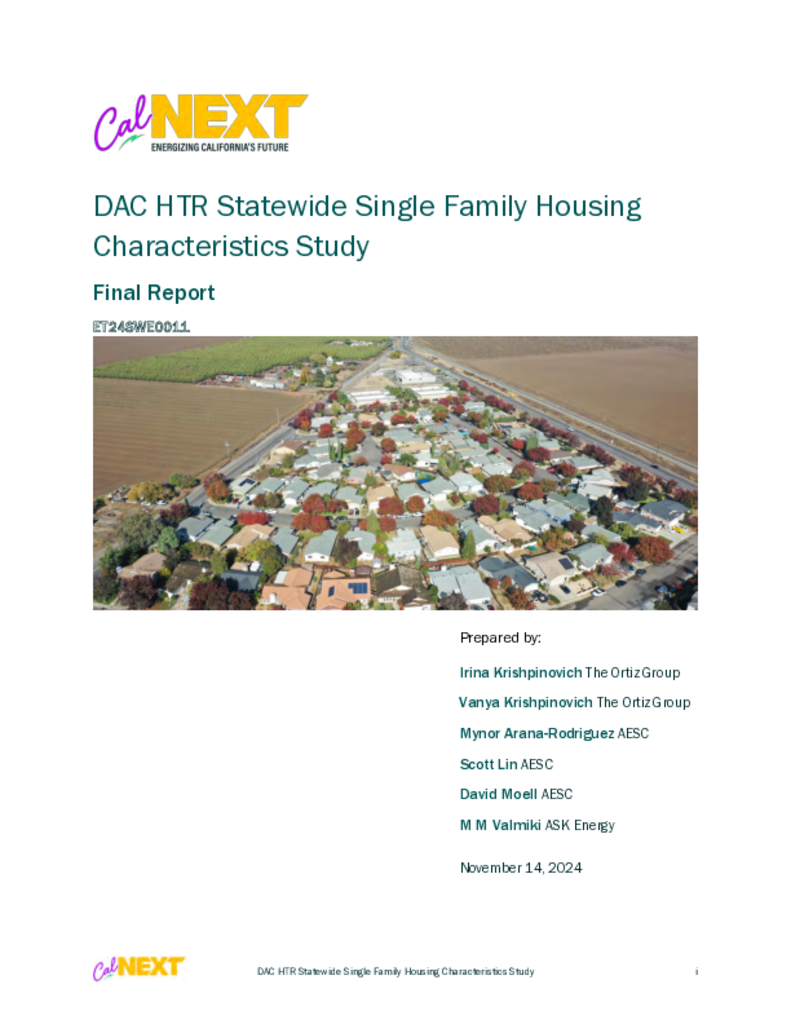ET24SWE0011 - DAC HTR Statewide SF Housing Characteristics Study
This market characterization study builds on the efforts and findings of the 2022/2023 CalNEXT Residential Housing Characteristics Study ET22SWE0022. The ET22SWE0022 study's objectives were to:
• Characterize existing DAC single family residence (SFR) building stock through publicly available census data relevant to electrification and electrification programs.
• Develop and validate a field survey by gathering information from a sample of 50 DAC and HTR housing sites.
• Characterize existing DAC SFR building stock and electrification readiness based on census and limited field survey analysis.
• Develop recommendations for future programs and interventions necessary for facilitating equitable electrification in DAC and HTR communities.
The 2022/2023 study met its objectives but also revealed that a statewide field survey effort was necessary to make meaningful characterization of DAC and HTR housing conditions and their readiness for electrification. The field survey included only 50 homes, as it was intended to evaluate the effectiveness and usefulness of the survey questions and approach. The results were comprised of a very small sample. Yet, it successfully demonstrated that the survey tool’s purpose and design would be instructive for the second phase of the effort and would more accurately characterize the building stock. In order to do so, significantly more surveys are required. The 2022/2023 study laid the groundwork for the study being proposed here. The census analysis performed as part of the ET22SWE0022 study requires greater sample numbers in order to begin to understand and visualize the gaps between census data analysis results and actual survey data collected from households. This second phase is required in order to complete the picture and understanding commenced in 2022/2023.
Specifically, this study will conduct 300-400 field surveys of low-income, DAC, and HTR single-family houses, statewide. The results of this expanded field component of housing surveys will serve to validate census data analysis for the same population. The purpose of the study is to address the lack of data on housing structures in disadvantaged communities (DAC) and Hard-to-Reach (HTR) areas, specifically of single-family homes (SFH). While high-level data such as the number of homes in DACs and other key demographic and market information (housing age, access to broadband, etc.) can be obtained from census and other research, data on the baseline physical conditions, current appliances, fuel types and electrical infrastructure found in DAC and HTR homes is lacking (i.e., structural integrity, hazards, electrical panel capacity, wiring technology, and code issues). This data is foundational to being able to both size the total available market for emerging technologies as well as developing effective, properly budgeted program pathways to serve and “electrify” these communities. Moreover, we aim to assess the electrification readiness levels of the households we survey. The project will utilize previous study data, leverage IOU ESA programs, contractor networks, CBO, and assessment specialist to perform the data collection. The detailed in-home survey assessments will shed light on how ready homes are for required upgrades, retrofits, minor home repair and remediation needs, which in turn will allow us to, 1) gauge electrification readiness, and 2) refine cost estimates associated with such work. The study will seek to understand the various barriers / concerns, cultural stereotypes, myths, and old wives’ tales that prevent customers from making the switch to all electric in DAC / HTR areas and the overall sentiment and willingness of moving away from gas and other fossil fuels. This information, analyzed in combination with census data, will be used to inform the scope and nature of barriers to serving DAC and HTR communities and to develop programmatic strategies for helping California achieve its decarbonization and equity goals.
All 300-400 field surveys will be collected within the IOU service territories of PG&E, SCE, and SDG&E.
The DAC HTR Statewide Single Family Housing Characteristics Study provides critical insights into the unique challenges faced by DACs and HTR communities in the context of electrification. The findings underscore the need for carefully designed equitable programs that not only address the technical and financial barriers, but also engage and educate residents in fostering a positive transition to an all-electric future. By leveraging the data and recommendations from this study, stakeholders can better prioritize resources and efforts to ensure that California's decarbonization goals are met in a way that is inclusive and equitable for all communities.

